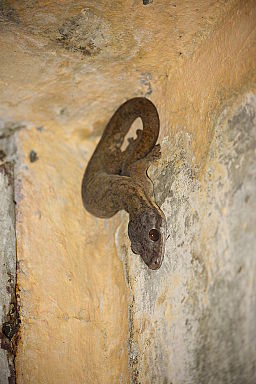This loose amalgam of a week is pretty representative of an average day, though a truly typical day sure hasn't happened yet.
5:30 - Wake up, wake roommate with poetry (optional), apply sunscreen, check field equipment, breakfast of: oats and yogurt, banana and/or peanut butter and/or milk and/or cinnamon; coffee.
6:15 - Sunrise, bird chorus begins. Last gear check, groups meet on the porch and put on boots, check radios.
6:30 - Two groups leave for different field sites, sometimes via car, mostly via feet. Roads in this rural area are a mix of cobbles, dirt, and a sprinkling of concrete or tarmac, so driving is only marginally faster than hiking, albeit much cooler. Smile and say buenos dias to everyone you pass, mostly coffee pickers and road workers working much longer days than you.
7:00 - Begin checking traps for mammals. One team member is in charge of handling (holding the animal), the other processing (weighing; recording notes; measuring lengths of body, tail, ear, and hind foot; swabbing mouth for DNA; tagging ear with ID number; and taking lots of photos). If at site 13, my favorite, do try not to fall down the mountain: channel your inner mountain goat and dash across the steep sandy rows of coffee.
10:00 - Complete checking traps. Everyone is famished. Second breakfast time! 1-2 peanut butter sandwiches and a boiled egg with crackers per person is typical. Check in with the group at the other site by radio, compare captures and give brief highlights of cool or unusual stuff caught.
10:30 - Time either for veg analysis, or a brief veg out. Each site has an array of vegetation info to be collected, from IDing all the trees to counting the heights of vegetation intersecting a transect line to measuring and photographing the coffee plants. If finished with all our analyses and have no miscellaneous projects to work on, find a shady trail and read, chat, or play cards.
13:00 or later - Begin baiting the traps, using a special mix of wetted dog food, vanilla, oats, and peanut butter. A small thumbnail-sized ball should do it. Firmly tapping the top of the trap should trigger the door to close; do this to make sure the sensitivity is right. Don't forget to bait the camera traps and switch out the ID cards!
15:00 - Head back to base. Some days end earlier, some later (if we are driving to the city for groceries, we will wrap up in the late morning; a full day of veg analysis with lots of captures will add on a couple hours). Take of the grungiest of your field gear off outside, leave equipment trash in the specified baggies outside the house, unpack the rest of your gear, shower, and meet everyone in the kitchen for a much-desired snack. Afternoon tasks are rotated, and include equipment-checking, data entry, sorting camera trap results, and bait making. Everyone works on IDing species and sorting through photos. Side tasks like dance parties, letter-writing, Spanish lessons, and recreational food preparation are strongly encouraged.
17:30 - Dinner prep begins, directed by the master chef of the day, who is assisted by one to all of the hungry crew.
18:30 - Dinner time! Favorite dishes so far include lentil and black bean burgers, peanut noodles, beans and rice with tortillas and fried eggs, pasta primavera, and veggie bread pudding.
19:00 - Rotating dish-cleaning duties, finish up daily jobs. After, we will often play cards, watch a movie, or just hang out and have a reading party before bed.











.JPG)

.JPG)


.jpg)
.jpg)
.jpg)







.JPG)

.JPG)


.JPG)
.JPG)




.JPG)










